Roasted beet salad (Σαλάτα με παντζάρια)
This Greek salad called Patzarosalata is made of roasted beets, their leafy green tops and feta. The salad is dressed with olive oil, red wine vinegar and seasoned with dry oregano and salt. Very easy to make, and as gorgeous as it is delicious.
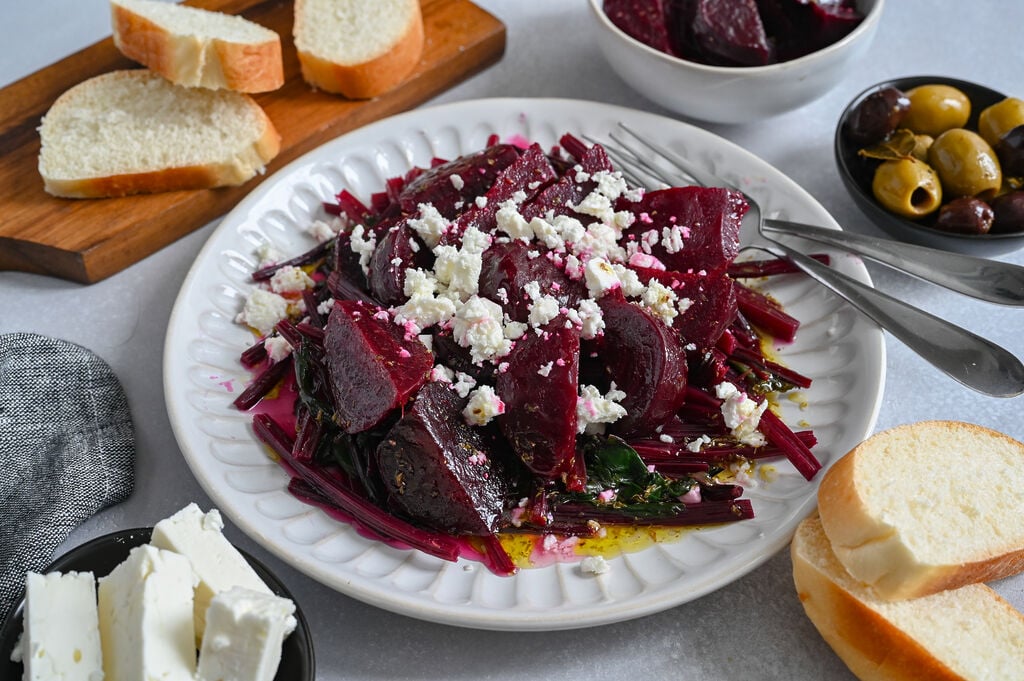
Whether or not you like eating beets, you have to admit that they are some of the most beautiful looking vegetables out there…or actually, under there; beets are root vegetables whose bulbs grow underground. In any case, although the most common type of beet is the deep red variety, there are a number of other vibrant colours, such as orange, yellow and red candy-cane striped beets called chiogga beets. Nature is truly marvelous.
Although it is true that beets are beauties, there is so much more to them than meets the eye, and all of it is delicious. The bulbous portion of the beet plant is the beetroot (or the taproot) and the stems and leaves form the beet greens. Beet greens are often discarded, which is a shame because they are packed with flavour and nutrition. My parents know this and would never dream of tossing these lovely greens into the compost or trash. In keeping with their philosophy of waste nothing, this salad incorporates both beetroots and beet greens, and is as pleasing to the palate as it is to the eye.
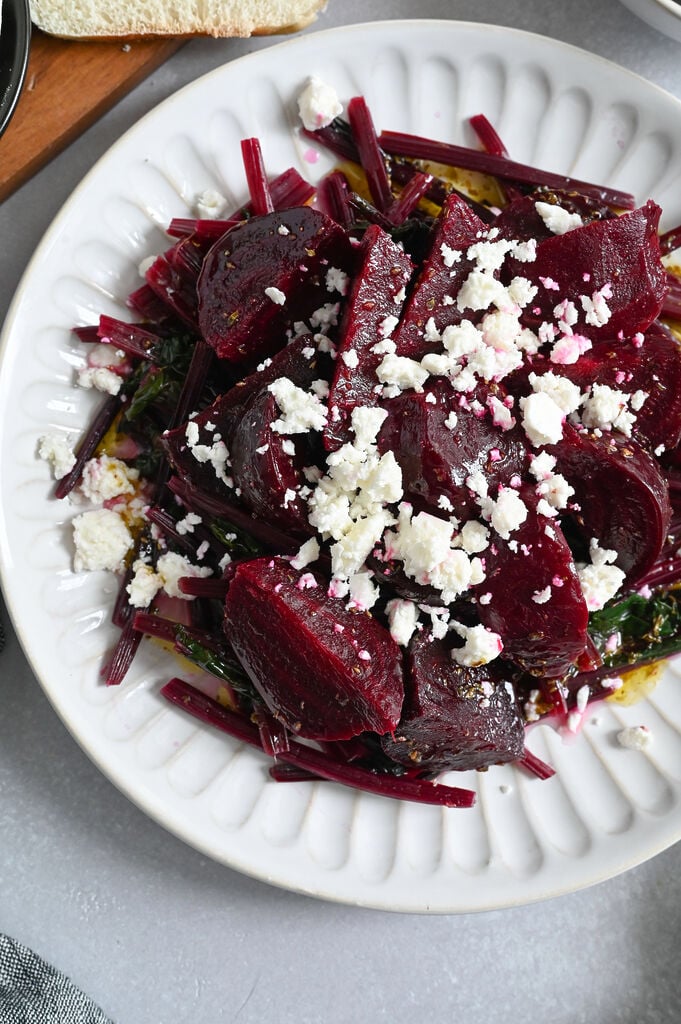
Why this recipe works
There are many ways to prepare beet roots but we find that the tastiest and easiest way is to roast them. Roasting beets seems to bring out their most delicious flavour, their most pronounced sweetness. And, if you use the techniques I am about to share with you, any concerns you may have about the mess that beets make will be washed away.
Key ingredients
You really don’t need much to make this classic Greek beet salad.
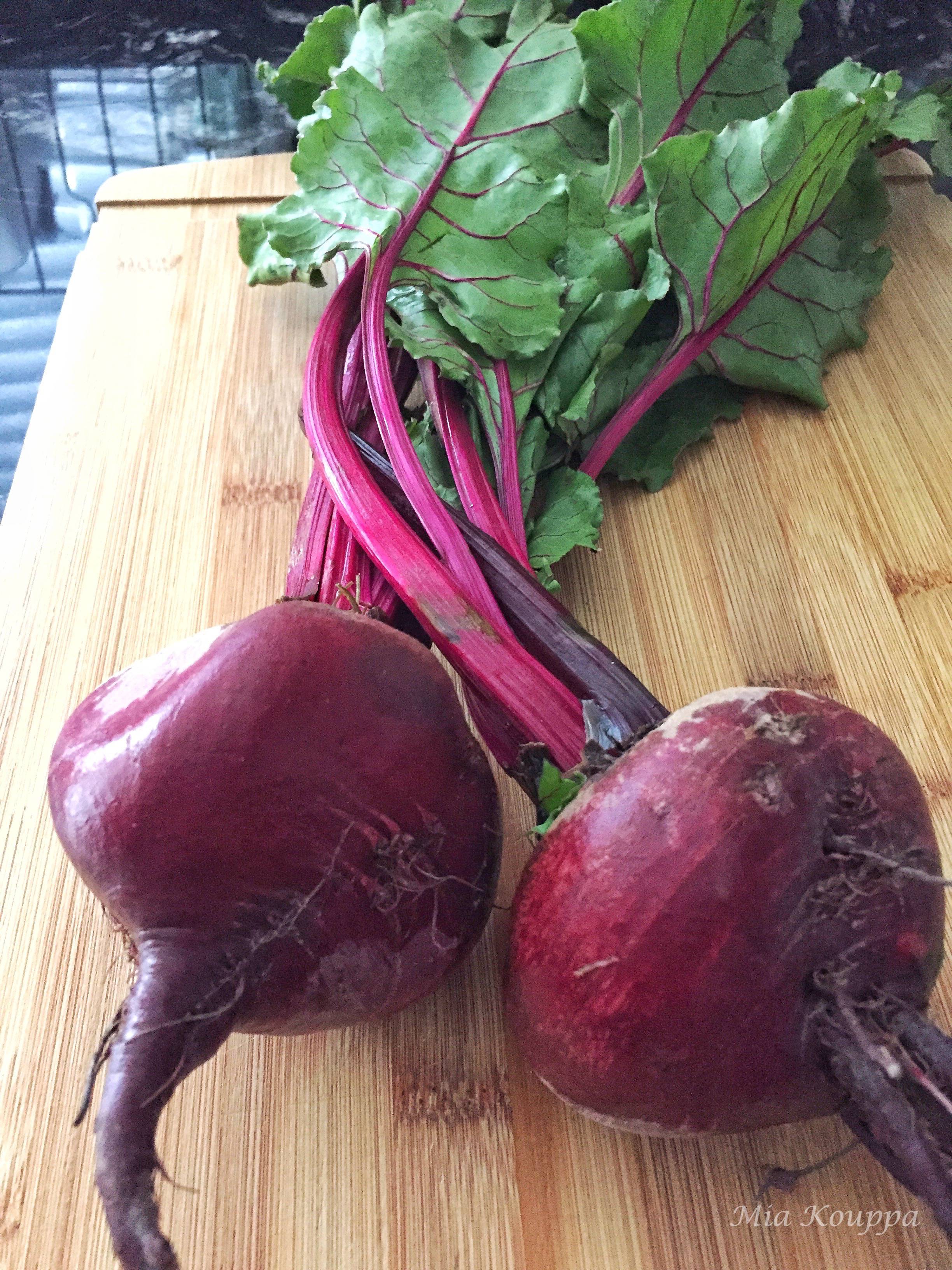
Beets When you buy your beets, try to find them with the greens still attached. Both are used in this recipe. The beet roots are sweet and hearty, while the beet greens have a more delicate, slightly peppery flavour.
Olive oil Greek olive oil has a fragrant and rich flavour, perfect in salads
Red wine vinegar I love the flavour and stronger notes of red wine vinegar
Feta I always use Greek feta, which is made with either sheep milk or a combination of sheep and goat milk
Oregano Dry Greek oregano has a distinct flavour which is much more pronounced than fresh oregano
Salt A basic, which enhances all other flavours
How to make it
Step 1
Preheat oven to 350 degrees Fahrenheit
Step 2
Cut off the tops of the beet greens, leaving about 1/2 inch of the stem still attached to the beetroot, and set the greens aside.
Step 3
Wash the beetroots and wrap each one individually in aluminum foil.
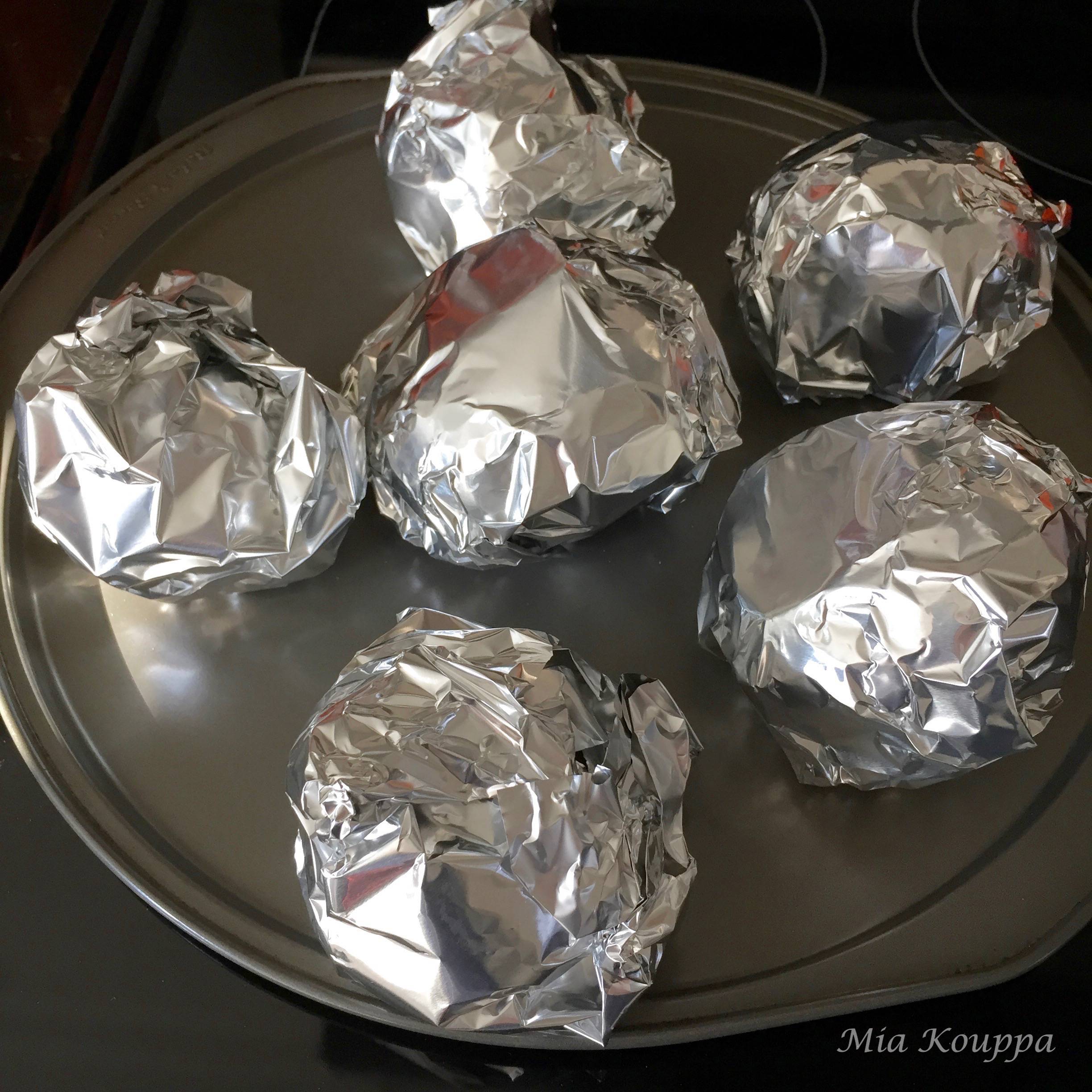
Step 4
Place on a cookie sheet or in a shallow baking pan and place on the middle rack of your oven. Roast for approximately 60 minutes or until beets are slightly soft when pressed.
Step 5
While your beet roots are roasting, chop the beet greens and stems into approximately 3 inch long pieces. Rinse very well in a bowl of water. Repeat until the leaves and stems are clean.
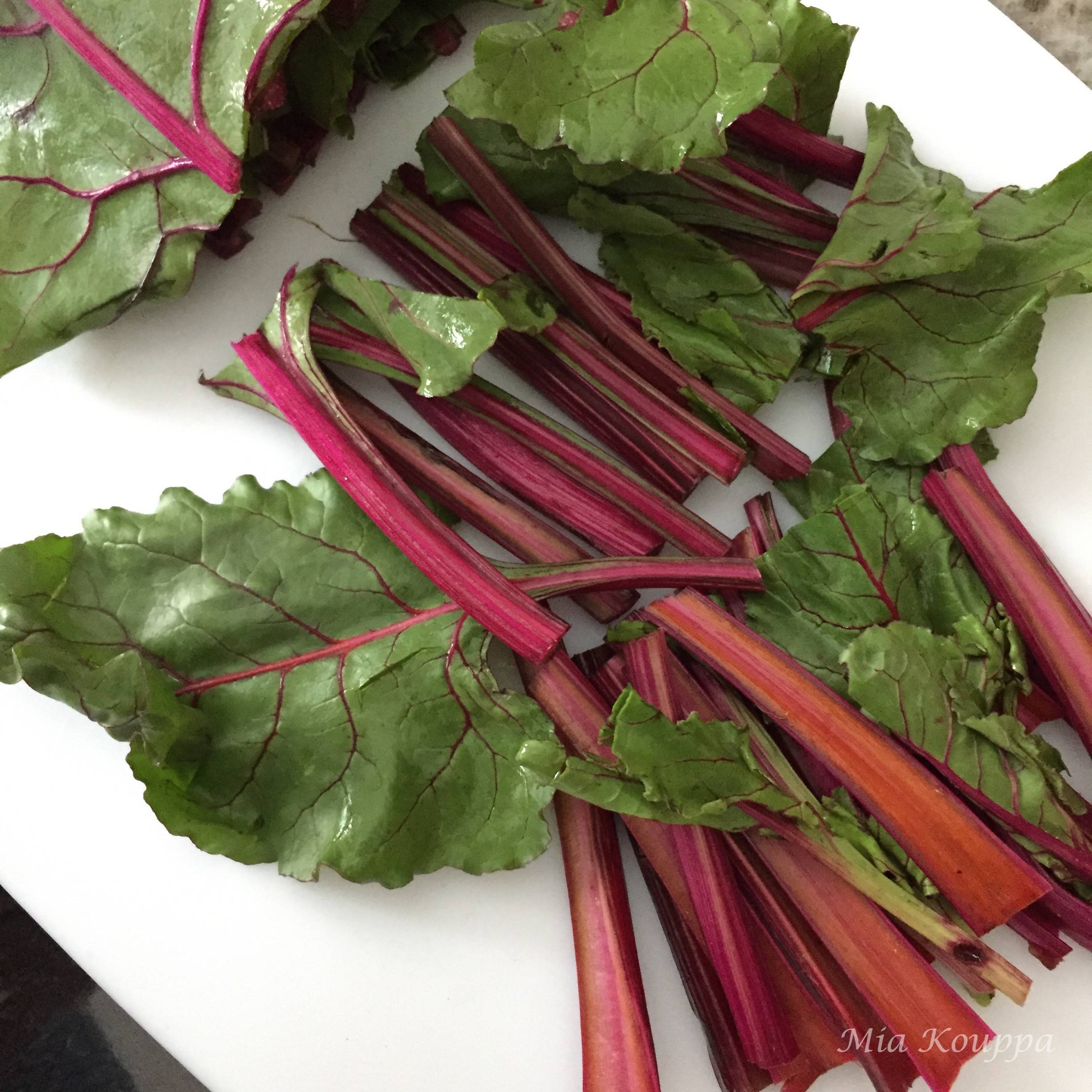
Step 6
Boil a pot of water. Add salt. When the water is at a rolling boil, drop in the beet greens and stems and lower heat to medium. Cook for approximately 5 minutes.

Step 7
Drain the greens and stems and rinse with cold water to stop the cooking process. In a bowl, mix with olive oil and red wine vinegar. Toss well and set aside.
Step 8
When your beet roots are done remove from the oven and allow them to cool until they can easily be handled. Wearing your rubber gloves, unwrap your beets, one at a time and use a small knife to peel off the skin. Chop each beet into bite sized chunks and place in a mixing bowl. Repeat with all of the beets. Remove your gloves.
Step 9
In the bowl with the chopped roasted beets add olive oil, red wine vinegar, oregano and salt. Mix well to combine, and set aside.
Step 10
To serve, plate the beet greens and stems along with the beets. Top with 1/2 cup crumbled Greek feta cheese.
Recipe substitutions
This recipe is made with red beets, but you can follow the steps exactly with other coloured beets, or a mixture of different colours. Also, if fresh beet greens are not available, you could make this same recipe with only the beetroot.
You can keep this salad vegan (lenten) by omitting the feta. It will still be delicious.
Instead of feta, try adding some crumbled goat cheese.
Cooking tips and helpful hints
Eating beets can be scary!
I am a nurse and therefore, quite comfortable talking about bodily fluids and excrements. If you aren’t so comfortable learning about them…too bad, because this bit of information could help avoid a panicked visit to your family doctor, or even worse, the Emergency Room. If you eat lots of beets (and with a recipe this delicious, you just might) you may experience a condition called beeturia. Friends, this is when your pee-pee (scientifically referred to as, your urine) turns red. The cause for this is the chemical betacyanin, found in red beets, which give them their fantastic colour. People break betacyanin down in varying degrees, and the degree of breakdown is dependant upon stomach acidity and the nutritional profiles of foods eaten alongside the red beets. More potentially worrisome than red urine, is that betacyanin may also cause you to fall victim to red poop (more academically referred to as your stool or feces). Do not fear, both beeturia and red poop are harmless and you certainly should not panic if you see red in the toilet bowl 12 – 48 hours after eating red beets. Any other time it appears as though you may have blood in your urine or stool however, please, please, consult your doctor.
Buying and using beet greens
Beet greens are quite delicate. If you do find them, make sure to examine the leaves and only buy batches of beets in which the leaves and stalks appear fresh. Because they are so fragile, it is always best to use them the same day that you purchase them.
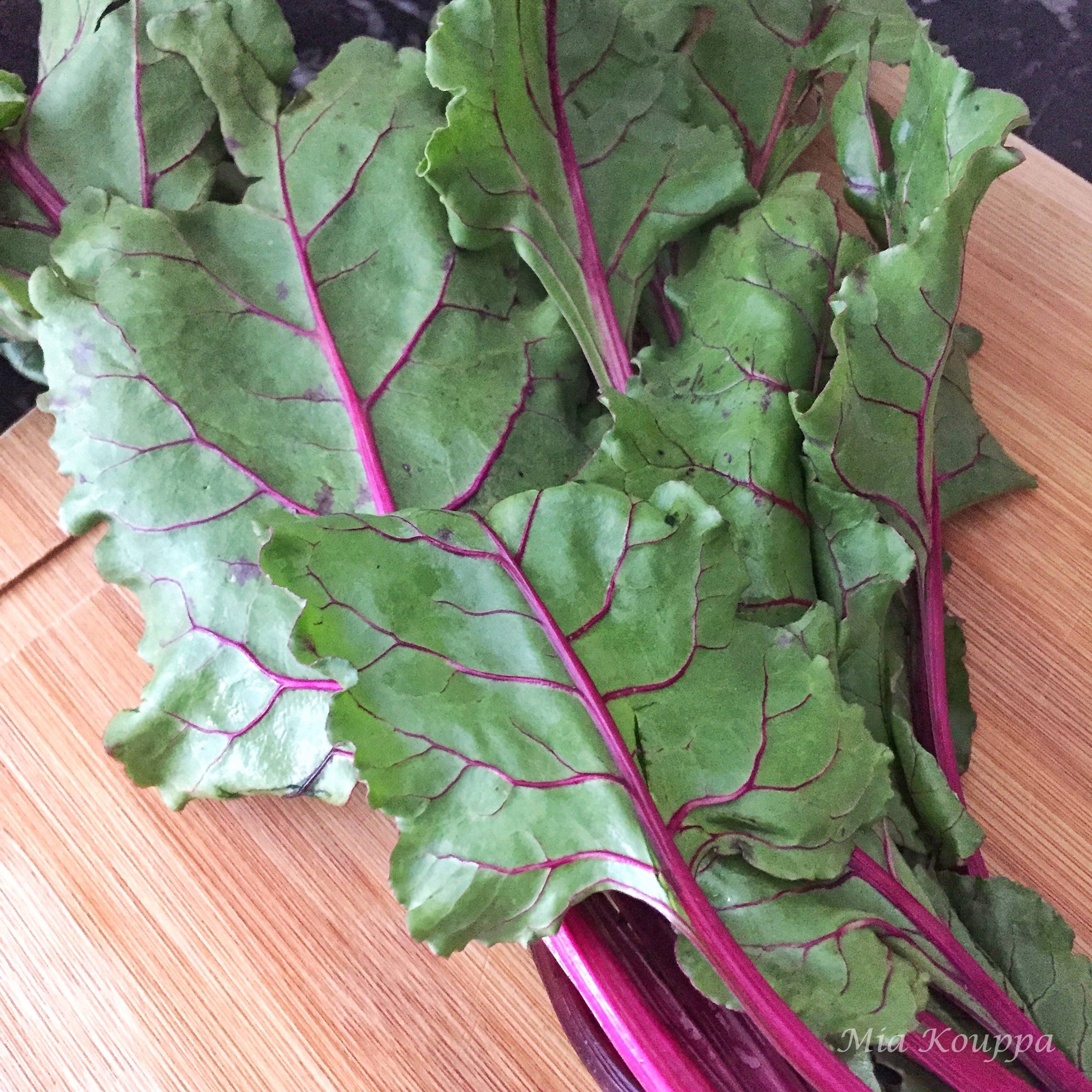
Cooking beets can be messy
I think that some people are reluctant to cook with beets because they can be messy, and if their juice gets on fabric, it can stain quite quickly. I have a solution to that problem, and no…it is not cooking naked. Keep your pants on, literally and figuratively speaking, and read on.
Key to this mess-free preparation is some aluminum foil and a pair of rubber gloves. I like to use dishwashing gloves reserved specifically for this purpose. Cut the beet stems off of the beet root, leaving about 1/2 inch stem attached to the beetroot. Wash the beets and wrap each beet individually in aluminum foil and then set them all on a baking sheet, place them in the oven, and roast them until they are done. The beets are then peeled after they are cooked, while still hot, but warm enough to handle; this is made easier because of the rubber gloves.
The actual steps are as follows: keeping your rubber gloves on at all times, take one beet at a time and carefully unwrap it, being mindful to keep the beet, and any juices which may have accumulated, on the aluminum foil. Then, using a small sharp knife, carefully peel the beet, allowing the peel you remain on the aluminum foil. Peeling the beets should be very easy to do; in fact, if your beets are still hot enough, the peel will often just slip off. After the beet is peeled, carefully cut it into bite size chunks and place these chunks in a bowl. Wrap all the beet scraps in the aluminum foil and place in the wastebasket. Even better, carefully move the beet peels into the compost bin and discard the aluminum foil only. Repeat with the rest of the beets. Once you are done, wash your hands while still wearing your gloves. This will keep them nice and clean until next time.

Leave part of the beet stem on the beetroot
The reason you will leave about 1/2 inch stem on the beetroot is because this will help minimize any of the juice that leaks out of the beets during the roasting process.
Frequently asked questions
What is the difference between beets and beet roots?
In general, beets refer to the entire plant, which includes the round bulb and the leafy tops. The round bulb is called the beet root. However, sometimes the round bulb is simply called a beet, and the leafy tops are called the beet greens. There seems to be some difference in naming depending on what part of the world you are in. For our purposes, the beet root is the part that grows underground and which you will roast, and the leafy tops are…well, the leafy tops.
Are beets good for you?
They are! Beets are a good source of beta-carotene (vitamin A) which is needed for healthy skin, bones and eyes. They are also a good source of folate, which is especially important for healthy cells and blood. You should definitely try adding beets to your diet.
Do I have to use fresh beets for this recipe?
Beets can be found either fresh, frozen or even canned. The best beets for this recipe would be the fresh ones, as the roasting really brings out their sweet flavour. However, you can certainly use canned (low sodium if possible) beets and even frozen ones – simply skip the roasting process. Of course, you won’t have the leafy green tops to go along with them.
Recipe variations
Make a roasted beet salad with feta and walnuts. Simply add some chopped walnuts to the top of your salad. You can also use almonds or pumpkin seeds.
Related recipes
If you love this great Greek salad, I think you will also enjoy these:
Greek pasta salad Addictive!!! Perfect as a side to everything!
Palikaria (or Polysporia or Fotokolyva) Mixed beans and wheat berries make this a nutritious and delicious salad.
Greek potato salad with herbs No need for mayonnaise with this light potato salad.
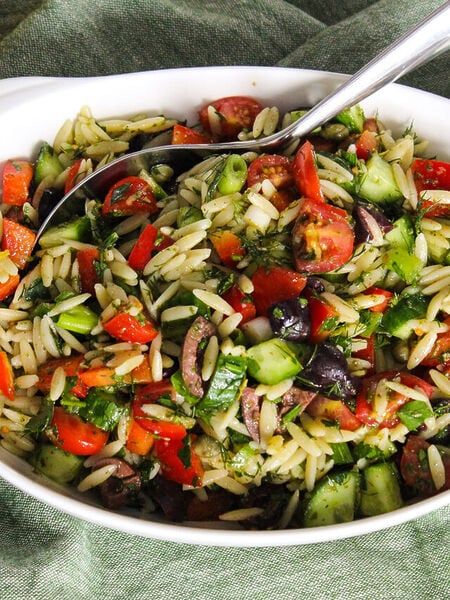
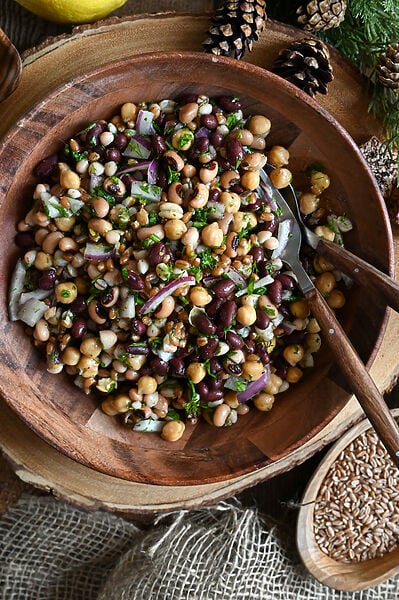
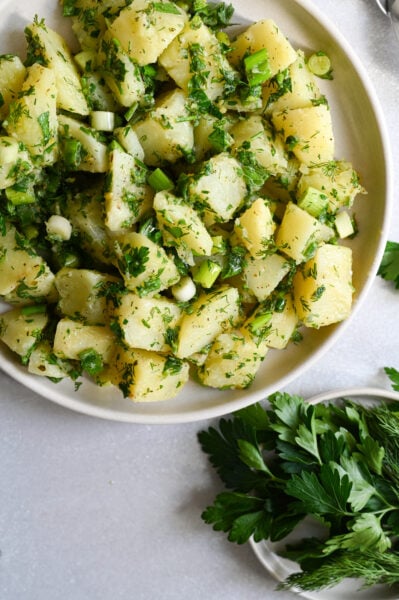
Make ahead
If you like, you can roast the beets and allow them to cool completely while still wrapped in the aluminum foil. You can then refrigerate them until you are ready to peel them and make your salad. If you do this however, it is a good idea to warm the beets up just a little bit after you have peeled and chopped them. This will bring out the flavours.
How to serve
This salad is most delicious served warm or at room temperature.

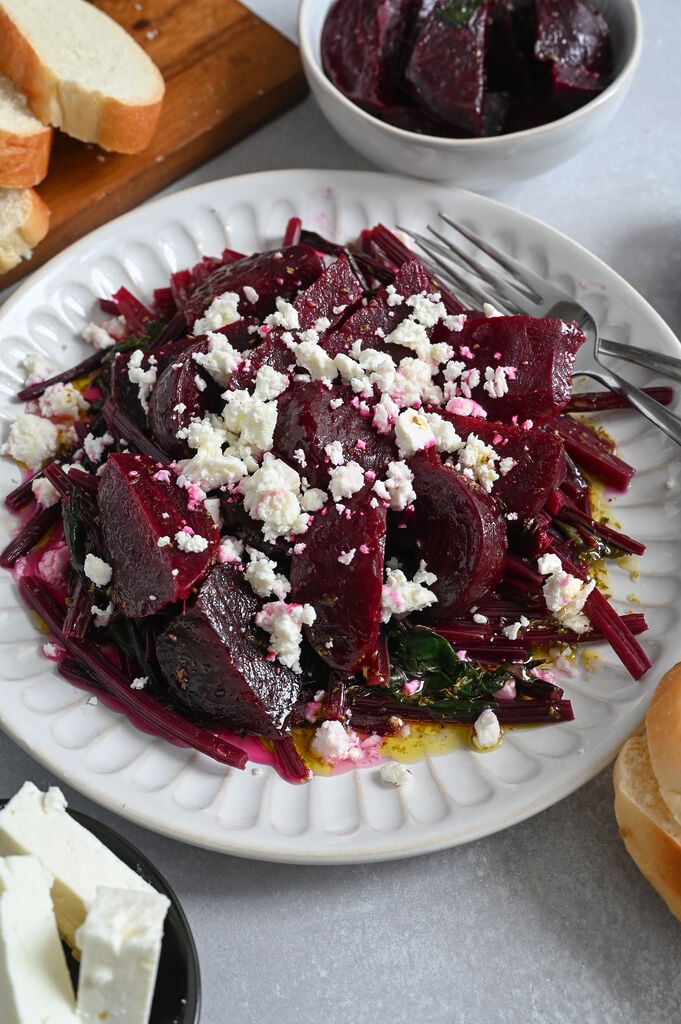

The amount of vinegar called for in this recipe is a starting point. Adjust as you like, adding more or less vinegar, depending upon your preference.
Follow my blog with Bloglovin
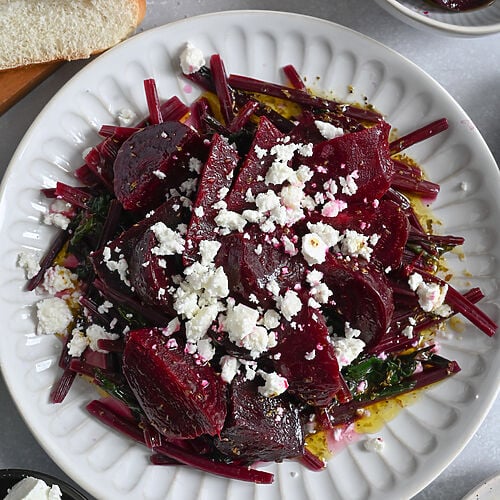
Greek roasted beet salad – Patzarosalata
Equipment
- Aluminum foil
- Large bowl
- rubber gloves optional, but highly recommended
- Small knife, like a paring knife
Ingredients
- 6-8 beets (with beet greens attached)
For the beet roots
- 1/4 cup Greek olive oil
- 2 tbsp red wine vinegar
- 1 tsp dry Greek oregano
- 1 ½ tsp salt
For the beet greens
- 1 tsp salt
- 1 tbsp olive oil
- 1 tbsp red wine vinegar
- 1/2 cup crumbled Greek feta
Instructions
- Preheat oven to 350 °F
- Cut off the tops of the beet greens, leaving about 1/2 inch of the stem still attached to the beetroot, and set the greens aside.6-8 beets (with beet greens attached)
- Wash the beetroots and wrap each one individually in aluminum foil.
- Place on a cookie sheet or in a shallow baking pan and place on the middle rack of your oven. Roast for approximately 60 minutes or until beets are slightly soft when pressed.
- While your beet roots are roasting, chop the beet greens and stems into approximately 3 inch long pieces. Rinse very well in a bowl of water. Repeat until the leaves and stems are clean.
- Boil a pot of water. Add salt. When the water is at a rolling boil, drop in the beet greens and stems and lower heat to medium. Cook for approximately 5 minutes.1 tsp salt
- Drain the greens and stems and rinse with cold water to stop the cooking process. In a bowl, mix with olive oil and red wine vinegar. Toss well and set aside.1 tbsp olive oil, 1 tbsp red wine vinegar
- When your beet roots are done remove from the oven and allow them to cool until they can easily be handled. Wearing your rubber gloves, unwrap your beets, one at a time and use a small knife to peel off the skin. Chop each beet into bite sized chunks and place in a mixing bowl. Repeat with all of the beets.
- Remove your gloves (See Recipe Note).
- In the bowl with the chopped roasted beets add olive oil, red wine vinegar, oregano and salt. Mix well to combine, and set aside.1/4 cup Greek olive oil, 2 tbsp red wine vinegar, 1 tsp dry Greek oregano, 1 ½ tsp salt
- To serve, plate the beet greens and stems along with the beets. Top with 1/2 cup crumbled Greek feta cheese.1/2 cup crumbled Greek feta
- Enjoy!
Notes
Nutrition

Try mincing a garlic in there. Mmm-mmm
I would skip the oregano and feta and add chopped shallots or onion.
A nice option, especially for anyone avoiding dairy! Thanks Anne 😉
I hope this doesn’t sound creepy but I love your recipes, the advice and learning so much about your family. I feel in someways I know you all and it is very authentic.
I had to make a huge change in my husbands and I eating habits. As I have learned med style way of eating I have come to your site to feed us.
Thank you both for all the insight advice and love of cooking you both bring. I’m a huge fan and I am on your site daily to feed the fam!
Much Love,
Rhonda
i
Hi Rhonda! Not creepy at all!! In fact, your message has just made our day 🙂 Thank you so much for your kind words, and we are truly honored and humbled that we are able to help you feed your family! Hoping that you continue to find much to love here with us. XOXO Helen & Billie